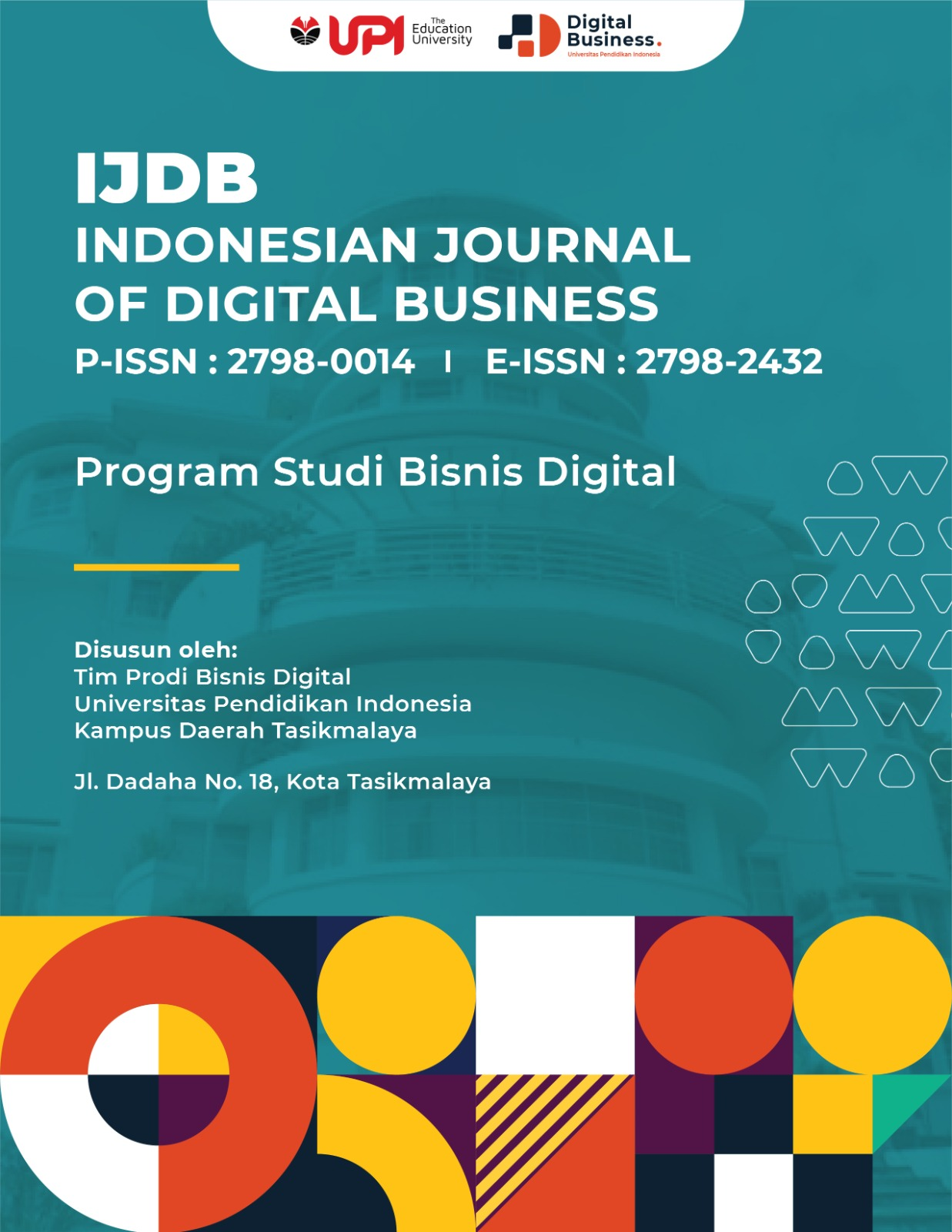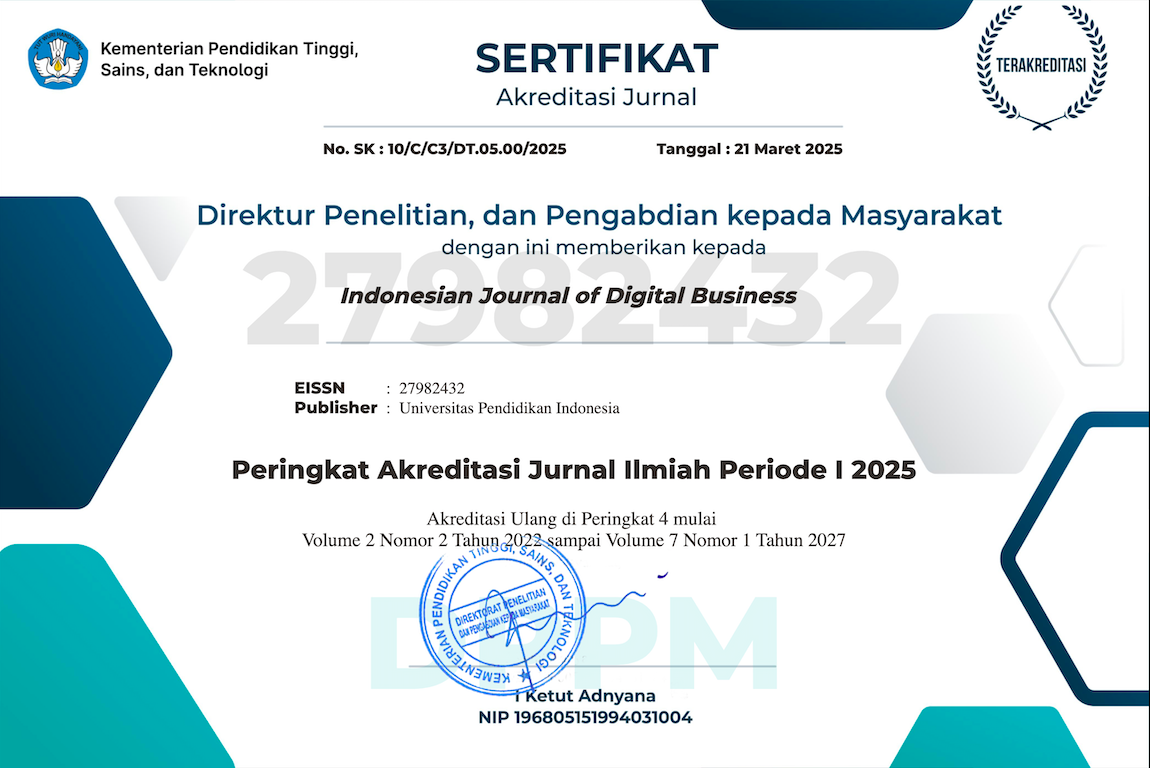Human vs. Virtual Fashion Influencers in Indonesia: How Expectancies and Parasocial Bonds Drive Emotional Engagement
Abstract
Keywords
Full Text:
PDFReferences
Arsenyan, J., & Mirowska, A. (2021). Almost human? A comparative case study on the social media presence of virtual influencers. International Journal of Human-Computer Studies, 155, Article 102694. https://doi.org/10.1016/j.ijhcs.2021.102694
Belanche, D., Casaló, L. V., & Flavián, M. (2024). Human versus virtual influences: A comparative study. Journal of Business Research, 173, Article 114493. https://doi.org/10.1016/j.jbusres.2023.114493
Byun, K. J., & Ahn, S. J. (2023). A systematic review of virtual influencers: Similarities and differences between human and virtual influencers in interactive advertising. Journal of Interactive Advertising, 23(4), 293–306. https://doi.org/10.1080/15252019.2023.2236102
Chi, N. T. K., & Hoang Vu, N. (2023). Investigating the customer trust in artificial intelligence: The role of anthropomorphism, empathy response, and interaction. CAAI Transactions on Intelligence Technology, 8(1), 260–273. https://doi.org/10.1049/cit2.12075
De Cicco, R., Iacobucci, S., Cannito, L., Onesti, G., Ceccato, I., & Palumbo, R. (2024). Virtual vs. human influencer: Effects on users’ perceptions and brand outcomes. Technology in Society, 77, Article 102488. https://doi.org/10.1016/j.techsoc.2024.102488
Gursoy, D., Chi, O. H., Lu, L., & Nunkoo, R. (2019). Consumer’s acceptance of artificially intelligent (AI) device use in service delivery. International Journal of Information Management, 49, 157–169. https://doi.org/10.1016/j.ijinfomgt.2019.03.008
Hair, J. F., Risher, J. J., Sarstedt, M., & Ringle, C. M. (2019). When to use and how to report the results of PLS-SEM. European Business Review, 31(1), 2–24. https://doi.org/10.1108/EBR-11-2018-0203
Kembau, A. S., Bernanda, D. Y., Kumaat, A. P., & Doa, F. N. (2025). What Drives the Adoption of Virtual Influencers in Indonesia? A TAM2 Perspective on Social Influence and Cognitive Absorption. Economics and Digital Business Review, 6(1), 575-591. . Retrieved from https://ojs.stieamkop.ac.id/index.php/ecotal/article/view/2093
Kembau, A. S., & Lendo, F. B. (2025, Mei). Augmented Reality in Fashion and Beauty Product Marketing: A Preliminary Study of Immersive Marketing in Indonesian E Commerce. In 12th Gadjah Mada International Conference on Economics and Business (GAMAICEB 2024) (hlm. 379–395). Atlantis Press. https://doi.org/10.2991/978-94-6450-xxx
Kembau, A. S., Kolondam, A., & Mandey, N. H. J. (2024). Virtual Influencers and Digital Engagement: Key Insights from Indonesia's Younger Consumers. Jurnal Manajemen Pemasaran, 18(2), 123–136. https://doi.org/10.9744/pemasaran.18.2.123-136
Kembau, A. S., Laimeheriwa, I. B., & Kumaat, A. P. (2024). The Synergistic Effect of AR Interactivity and Personalization on Consumer Behavior in E Commerce. JMBI UNSRAT (Jurnal Ilmiah Manajemen Bisnis dan Inovasi Universitas Sam Ratulangi), 11(2), 1382–1391. https://doi.org/10.35794/jmbi.v11i2.57176
Labrecque, L. I. (2014). Fostering consumer–brand relationships in social media environments: The role of parasocial interaction. Journal of Interactive Marketing, 28(2), 134–148. https://doi.org/10.1016/j.intmar.2013.12.003
Li, H., Lei, Y., Zhou, Q., & Yuan, H. (2023). Can you sense without being human? Comparing virtual and human influencers endorsement effectiveness. Journal of Retailing and Consumer Services, 75, Article 103456. https://doi.org/10.1016/j.jretconser.2023.103456
Longoni, C., & Cian, L. (2022). Artificial intelligence in utilitarian vs. hedonic contexts: The “word-of-machine” effect. Journal of Marketing, 86(1), 91–108. https://doi.org/10.1177/00222429211027551
Munnukka, J., Talvitie-Lamberg, K., & Maity, D. (2022). Anthropomorphism and social presence in human–virtual service assistant interactions: The role of dialog length and attitudes. Computers in Human Behavior, 135, Article 107343. https://doi.org/10.1016/j.chb.2022.107343
Pandey, P., & Rai, A. K. (2023). Consumer adoption of AI-powered virtual assistants (AIVA): An integrated model based on the SEM–ANN approach. FIIB Business Review, 12(3), 23197145231196066. https://doi.org/10.1177/23197145231196066
Rustine, M., & Indriana, I. (2023). Potensi Penggunaan Influencer Virtual Indonesia Bagi Pemasaran Pariwisata Indonesia. Altasia Jurnal Pariwisata Indonesia, 5(2), 16-27. https://doi.org/10.37253/altasia.v5i2.7875
Venkatesh, V., Thong, J. Y. L., & Xu, X. (2012). Consumer acceptance and use of information technology: Extending the unified theory of acceptance and use of technology. MIS Quarterly, 36(1), 157–178. https://doi.org/10.2307/41410412
We Are Social, & Hootsuite. (2023). Digital 2023: Indonesia. https://datareportal.com/reports/digital-2023-indonesia
Yu, J., Dickinger, A., So, K. K. F., & Egger, R. (2024). Artificial intelligence-generated virtual influencer: Examining the effects of emotional display on user engagement. Journal of Retailing and Consumer Services, 76, Article 103560. https://doi.org/10.1016/j.jretconser.2023.103560
DOI: https://doi.org/10.17509/ijdb.v5i1.87142
Refbacks
- There are currently no refbacks.
Copyright (c) 2025 Universitas Pendidikan Indonesia (UPI)

This work is licensed under a Creative Commons Attribution-ShareAlike 4.0 International License.
Indonesian Journal of Digital Business is published by Universitas Pendidikan Indonesia (UPI)
and managed by Department of Digital Business
Jl. Dr. Setiabudi No.229, Kota Bandung, Indonesia - 40154
View My Stats





1.png)